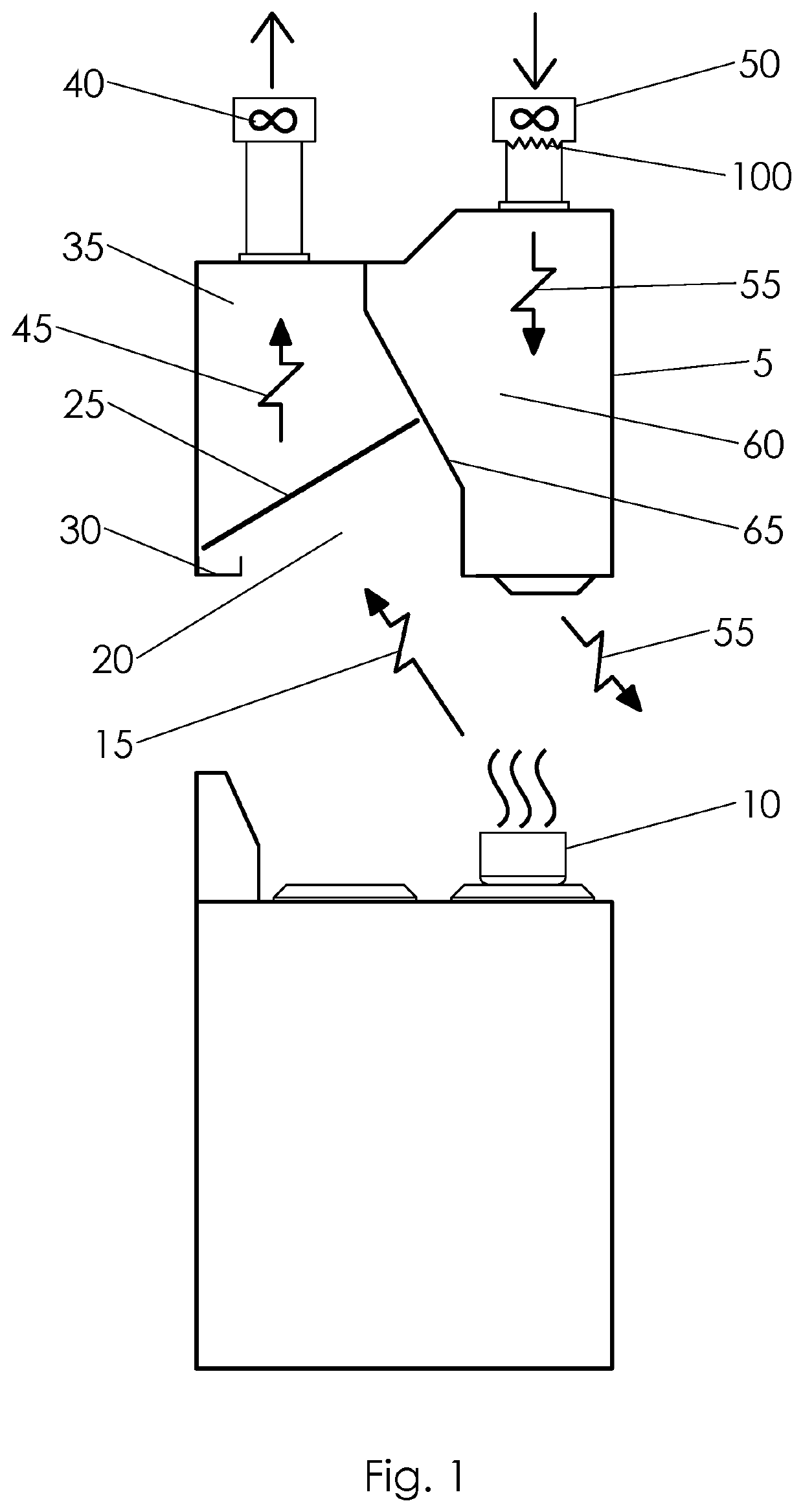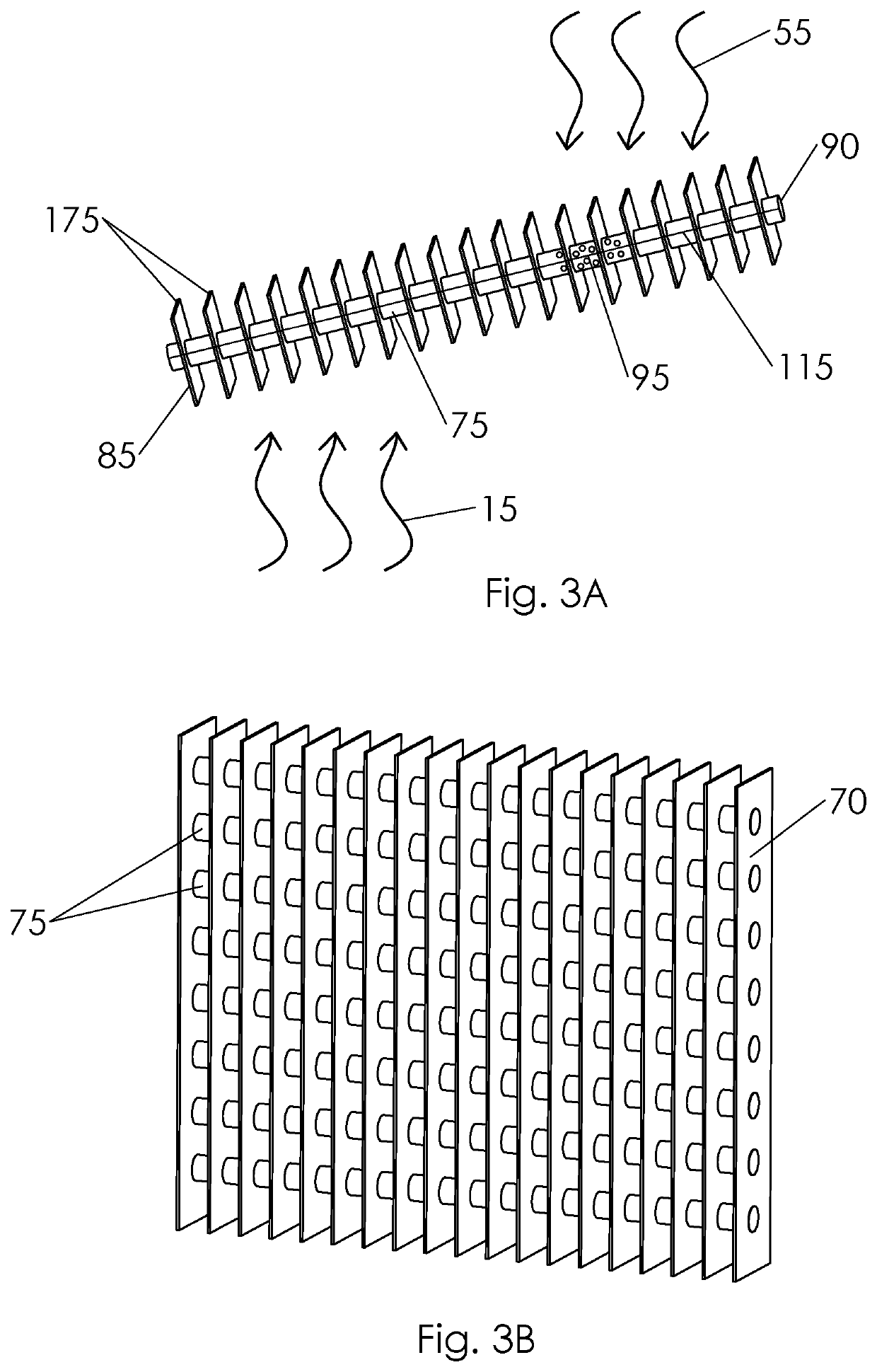Exhaust hood energy recovery device
a technology of energy recovery device and exhaust hood, which is applied in the direction of lighting and heating apparatus, heating types, and domestic stoves or ranges. it can solve the problems of harmful gases, vaporized grease, and large heat generated in commercial kitchens, and achieve the effects of convenient removal, easy cleaning, and exchang
- Summary
- Abstract
- Description
- Claims
- Application Information
AI Technical Summary
Benefits of technology
Problems solved by technology
Method used
Image
Examples
Embodiment Construction
[0074]FIG. 1 illustrates a typical commercial kitchen hood 5 positioned above a cooking operation 10. In this design, hot exhaust 15 from the cooking operation 10 is drawn into the air entrance chamber 20 and through a filter 25. Excess grease drips from the filter 25 into a grease collection trough 30 while the filtered air 45 passes into the exhaust chamber 35 of the hood 5. An exhaust fan 40, creates the draft, drawing the filtered air 45 to the exterior while a makeup air unit 50 delivers fresh makeup air 55 to the supply chamber 60 of the hood. A baffle 65 separates the hot exhaust 15 and filtered air 45 from the fresh makeup air 55. The baffle 65 may be placed at any point within the kitchen hood 5 provided that the design creates acceptable air velocity flows for each air stream.
[0075]Oftentimes the fresh makeup air 55 must be heated before it is returned to the cooking area. This is typically done with heating device 100 within the makeup air unit 50. The present invention s...
PUM
 Login to View More
Login to View More Abstract
Description
Claims
Application Information
 Login to View More
Login to View More - R&D
- Intellectual Property
- Life Sciences
- Materials
- Tech Scout
- Unparalleled Data Quality
- Higher Quality Content
- 60% Fewer Hallucinations
Browse by: Latest US Patents, China's latest patents, Technical Efficacy Thesaurus, Application Domain, Technology Topic, Popular Technical Reports.
© 2025 PatSnap. All rights reserved.Legal|Privacy policy|Modern Slavery Act Transparency Statement|Sitemap|About US| Contact US: help@patsnap.com



